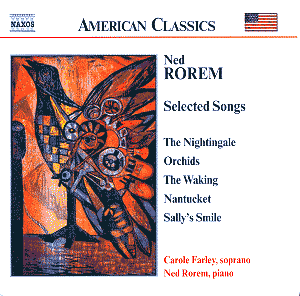 Composer: Gustav Mahler
Composer: Gustav Mahler
Works: Symphony No. 2 in C Minor “Resurrection”
Performers: Helen Donath (Soprano), Birgit Finnilä (Mezzo Soprano), Südfunk-Chor, Chor der Staatlichen Hochschule für Musik und Darstellende Kunst, Stuttgart, Radio-Sinfonieorchester Stuttgart/Sir John Barbirolli
Recording: Live in the Konzerthaus Liederhalle, Stuttgart on April 5, 1970
Label: EMI
Mahler’s Symphony No. 2, often referred to as the “Resurrection” Symphony, stands as a monumental work within the canon of late-Romantic orchestral literature. Completed between 1888 and 1894, it reflects the composer’s preoccupation with themes of death, rebirth, and the existential struggle of the human spirit. This performance, conducted by Sir John Barbirolli in 1970, captures a pivotal moment in music history, not only due to the work’s philosophical depth but also as it was one of Barbirolli’s final interpretations before his passing. His intimate familiarity with Mahler’s oeuvre—having conducted this symphony thirty-two times prior—imbues this recording with a profound sense of urgency and interpretative insight.
Barbirolli’s approach to the first movement is masterful, characterized by a world-weary yet expectant tone that resonates deeply, especially in light of the conductor’s own deteriorating health at the time. The opening’s lyrical material unfolds with a broad, singing line, supported by expressive string phrases that float above a sonorous underpinning. His interpretative choices highlight the tension inherent in Mahler’s music; the climactic moments swell with a palpable energy, yet the conductor maintains a keen awareness of the movement’s underlying fragility. The recapitulation’s dramatic crisis, while marred by a momentary lapse in the ensemble, ultimately adds an element of realism to this “live” experience, emphasizing the unpredictable nature of performance.
The second movement, while more straightforward in its execution, benefits from Barbirolli’s sharp rhythmic insights. The nuances of the orchestration are meticulously balanced, with woodwinds and brass engaging in a palpable dialogue against the strings. His ability to infuse the music with a sense of kinship to Mahler’s later works, such as the Sixth Symphony, enhances the overall interpretation, offering listeners a glimpse into the composer’s broader musical landscape. A similar attention to detail is evident in the third movement, where Barbirolli’s deft handling of the score reveals the sarcasm and irony that Mahler embeds within the narrative. The trumpeter’s poignant solo, imbued with longing, stands out as one of the performance’s hallmarks, capturing the essence of Mahler’s vision with a bittersweet nostalgia.
The fourth movement introduces the soloists, with Birgit Finnilä’s rendition of “Urlicht” exuding a haunting darkness that echoes Mahler’s deep existential questions. The interplay between the voices and the orchestral fabric is beautifully articulated, with Barbirolli’s careful orchestration allowing the brass to punctuate Finnilä’s lines effectively. This movement, steeped in “Wunderhorn” characteristics, eschews the overly pious interpretations often heard, instead presenting a more visceral connection to the music’s emotional core.
As the final movement unfolds, the triumph of resurrection is met with Barbirolli’s compelling, unadorned approach. The off-stage brass, a crucial aspect of the climax, is executed with remarkable clarity. The transition into the choral finale is executed with an impressive sense of drama; the chorus embodies not an abstract ideal of serenity, but rather a hard-won acceptance of life’s trials, echoing Mahler’s complex relationship with faith and mortality. The recording captures the full spectrum of orchestral color and dynamic nuance, though it is not without its flaws—occasional brass fluffs serve as reminders of the live context, albeit adding to the authenticity of the experience.
The sound quality, remastered from the original tapes, presents a vivid aural tapestry that belies its age. While some may find the sonic limitations of a 1970 live recording slightly inhibitive, it ultimately enriches the listening experience, grounding us in the immediacy of the performance. Comparatively, this interpretation stands alongside Barbirolli’s studio recordings, offering a rawness and emotional intensity that his more polished efforts may lack.
This release serves as a poignant reminder of Barbirolli’s stature as one of the great Mahlerians of the 20th century. The performance encapsulates not only the grandeur of Mahler’s vision but also the profound personal struggle of the conductor, who, in his final weeks, sought to confront the gates of eternity. The recording stands as a significant addition to the Mahler discography, resonating with both historical significance and artistic integrity. It is a performance to be treasured for its rich emotional landscape and Barbirolli’s indelible imprint on Mahler’s legacy.



